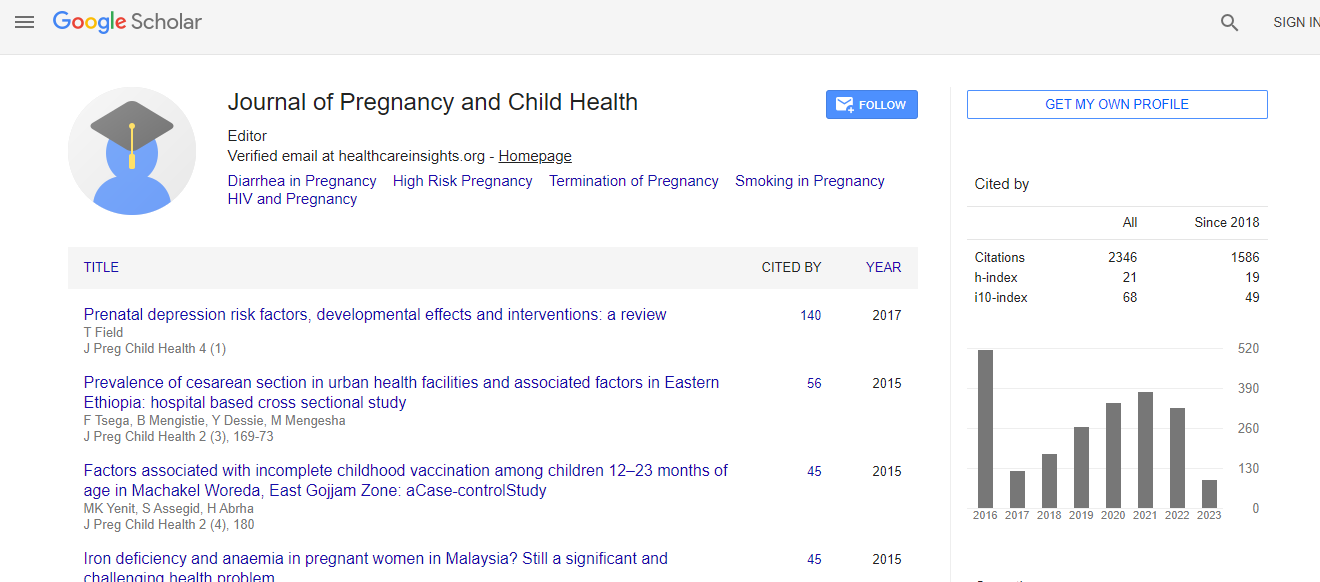Commentary
Childhood Skin Disorders: Genetic Study of the Erythema Infectiosum (Fifth Disease)
Danial Khorsandi1* and Ghasemi Mahtab21Barcelona Skin Genomics, University of Barcelona, Spain
2University of Barcelona, Spain
- *Corresponding Author:
- Danial Khorsandi
Barcelona Skin Genomics
University of Barcelona, Spain
Tel: 34617772262
E-mail: danialkhorsandi92@gmail.com
Received date: January 03, 2017; Accepted date: February 07, 2017; Published date: February 12, 2017
Citation: Khorsandi D, Mahtab G (2017) Childhood Skin Disorders: Genetic Study of the Erythema Infectiosum (Fifth Disease). J Preg Child Health 4:300. doi:10.4172/2376-127X.1000300
Copyright: © 2017 Khorsandi D, et al. This is an open-access article distributed under the terms of the Creative Commons Attribution License, which permits unrestricted use, distribution and reproduction in any medium, provided the original author and source are credited.
Abstract
Generally known as the “Fifth Disease”, Erythema Infectiosum is a condition primarily characterized by its lacy exanthema like a slapped cheek appearance. This disease is generally targeted to young kids (some as young as toddlers) due to intact with human parvovirus (Erythrovirus). Early stages of symptoms begin within the 7 days’ time frame after the infection from PV-B19. The symptoms usually last for 2-3 days. They symptoms of “Erythema” include fever, severe headaches, sore throat, pruritus, coryza, and abdominal pain. Following a week of symptoms free period, the infection progresses through different stages as below: Phase1: The Infection starts with a red slapped cheek appearance. However, the appearance usually fades over 3-4 days. Phase2: This phase occurs after some time and is regarded as “erythematous maculopapular rash” that turns into a lacelike reticular pattern. Phase3: Frequent defrayal and relapses may occur for weeks or months due to inducements such as heavy excursion due to exercise, body stress, or exposure of skin to direct sunlight or bathing in hot water (which may lead to skin burns/overheating). The analysis of erythema infectiosum is constructed on clinical presentations. However, an examination of patients with the general symptoms is not necessary. Patients with major signs of symptoms related to human parvovirus (PV) B19, and woman who are pregnant need to have frequent examination of infection. Medical tests like; IgM assays, radioimmunoassay (RIA) Enzyme-linked immunosorbent (ELISA) Polymerase chain reaction (PCR) assay and Loop-mediated isothermal amplification, are some good tests to check the infection status on patients. As erythema infectiosum is only an initial childhood disease which is self-limited. Parents can follow a brief checkup regarding the condition of Infection. On the contrary, erythema infectiosum can be cured by using nonsteroidal anti-inflammatory drugs (NSAIDs). The drugs can help to get rid of the major symptoms like fever, malaise, headache, along with topical antipruritic and antihistamines (which also relieve pruritus). It is also recommended for patients to drink plenty of fluids and rest well.

 Spanish
Spanish  Chinese
Chinese  Russian
Russian  German
German  French
French  Japanese
Japanese  Portuguese
Portuguese  Hindi
Hindi 
